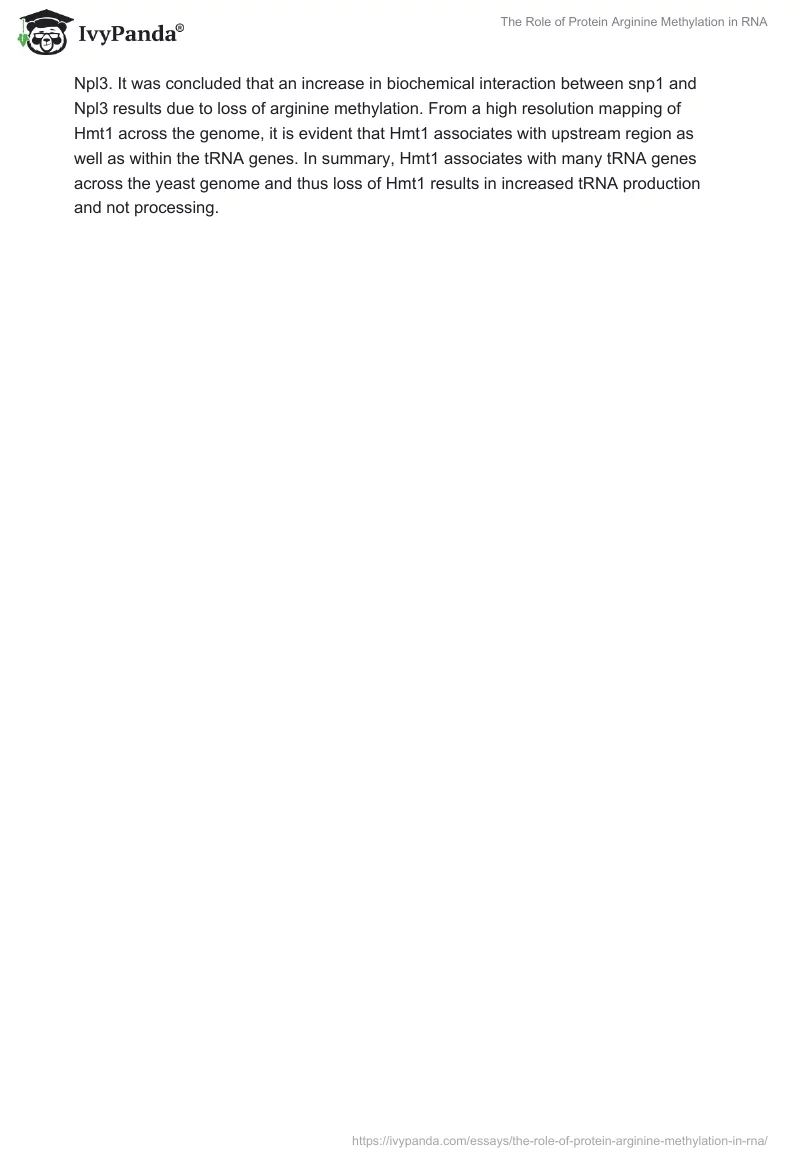The seminar on the role of protein arginine methylation in RNA metabolism encompassed several things. The arginine methylation process was highlighted. In discussing how the arginine methylation process affects biological processes, cellular processes affected by the process were highlighted. The P.A. methyltransferase enzymes are involved and it is known that PRMT’s are conserved across the eukaryotes. The yeast S. cerevisiae contains a major PRMT, i.e. Hmt1 which is a 40kda molecule which acts as a dimer or oligomer and it catalyzes the formation of asymmetric dimethylarginines. This leads to the biogenesis of messenger ribonucleoprotein particle. The question of whether loss of Hmt1 could affect mRNA production was raised. It was demonstrated by setting up RNA fluorescence in-situ hybridization and comparing HSP104 mRNA production kinetics between WT and Htm1 cells. It was identified that mRNP requires co-transcriptional recruitment as examined using ChIP and viewing of the recruitment profile of Npl3 and Tho2. In summary, Hmt1 affects biochemical association of mRNP component thus loss of Hmt1 leads in impaired HSP104 message production. The status of Hmt1 affects the co-transcriptional recruitment of Yra1, Hrp and Nab2 but not NPl3 and Tho2. Thus, Hmt1 is responsible for orchestrating mRNP remodeling.
In the pre-mRNA splicing in budding yeast, about 6,000 genes are involved and a single intron has about 5% of ICGs leading to conservation of the machinery. Two pre-mRNA splicing factors are involved in arginine methylation in yeast: yeast cells expressing TAP-tagged splicing factor in Htm1 cells and TAP-purification of tagged splicing factor. The process of co-trascriptional recruitment of yeast splicing factors is involved and Hmt1 affects the recruitment of Snp1 and U1-SnRNP-associated factors. Changes occur in ICGS and non ICDs bound by U1 SnRNP and its associated factors. It is evident that loss of Hmt1 decreases binding of 1% of ICG2 by splicing factors recruited after addition ofU1 snRNP to ICGs. The correlation between recruitment and splicing was done and REC107 was found to be bound by Prp40 only while HOP2 was found to be bound by 4 out of 7 in Hmt1. This led to the speculation that there is a potential molecular mechanism controlled by Hmt1 function. This could be demonstrated by finding how Hmt1 affects the biological association between snp1 and Npl3. It was concluded that an increase in biochemical interaction between snp1 and Npl3 results due to loss of arginine methylation. From a high resolution mapping of Hmt1 across the genome, it is evident that Hmt1 associates with upstream region as well as within the tRNA genes. In summary, Hmt1 associates with many tRNA genes across the yeast genome and thus loss of Hmt1 results in increased tRNA production and not processing.


